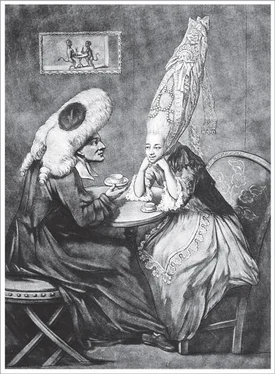Bill Bryson - At Home
Здесь есть возможность читать онлайн «Bill Bryson - At Home» весь текст электронной книги совершенно бесплатно (целиком полную версию без сокращений). В некоторых случаях можно слушать аудио, скачать через торрент в формате fb2 и присутствует краткое содержание. Жанр: Старинная литература, на английском языке. Описание произведения, (предисловие) а так же отзывы посетителей доступны на портале библиотеки ЛибКат.
- Название:At Home
- Автор:
- Жанр:
- Год:неизвестен
- ISBN:нет данных
- Рейтинг книги:4 / 5. Голосов: 1
-
Избранное:Добавить в избранное
- Отзывы:
-
Ваша оценка:
- 80
- 1
- 2
- 3
- 4
- 5
At Home: краткое содержание, описание и аннотация
Предлагаем к чтению аннотацию, описание, краткое содержание или предисловие (зависит от того, что написал сам автор книги «At Home»). Если вы не нашли необходимую информацию о книге — напишите в комментариях, мы постараемся отыскать её.
At Home — читать онлайн бесплатно полную книгу (весь текст) целиком
Ниже представлен текст книги, разбитый по страницам. Система сохранения места последней прочитанной страницы, позволяет с удобством читать онлайн бесплатно книгу «At Home», без необходимости каждый раз заново искать на чём Вы остановились. Поставьте закладку, и сможете в любой момент перейти на страницу, на которой закончили чтение.
Интервал:
Закладка:
The Vanderbilts were the richest family in America, with an empire founded on railroads and shipping by Cornelius Vanderbilt, “a coarse, tobacco-chewing, profane oaf of a man,” in the estimation of one of his contemporaries. Cornelius Vanderbilt—“Commodore” as he liked to be known, though he had no actual right to the title—didn’t offer much in the way of sophistication or intellectual enchantment, but he had a positively uncanny gift for making money. At one time he personally controlled some 10 percent of all the money in circulation in the United States. The Vanderbilts between them owned some twenty thousand miles of railway line and most of what rolled along it, and that provided them with more money than they really knew what to do with.* And Richard Morris Hunt became, in the nicest possible way, the man who helped them spend it. He built houses of exceptional grandeur for them on Fifth Avenue in New York, in Bar Harbor in Maine, on Long Island, and in Newport. Even the family mausoleum on Staten Island was, at $300,000, as costly as many an outsized mansion. Whatever architectural whims fluttered through their brains Hunt was there to satisfy. Oliver Belmont, husband of Alva Vanderbilt, was crazy about horses. He had Hunt design for him a fifty-two-room mansion, Belcourt Castle, in which the whole of the ground floor was stables, so that Belmont could drive his coach straight through the massive front doors and into the house. The horses’ stalls were paneled in teak with sterling silver fittings. The living area was above.
In one of the many Vanderbilt mansions, a breakfast nook was adorned with a Rembrandt painting. A children’s playhouse at the Breakers was larger and better appointed than most people’s actual houses; it came complete with bell pulls connected to the main house so that servants could be summoned if a child suddenly required refreshments, needed a shoelace tied, or suffered some other crisis of comfort. The Vanderbilts grew so powerful and spoiled that they could get away, literally, with murder. Reggie Vanderbilt, son of Cornelius and Alice Vanderbilt, was a notoriously reckless driver (as well as insolent, idle, stupid, and without redeeming feature of any type) who ran through or over pedestrians on five occasions in New York. Two of those he flung aside were killed; a third was crippled for life. He was never charged with any offense.
The one member of the family who seemed immune from the urge to be extravagant or revolting was George Washington Vanderbilt, a member of the clan so painfully shy that people sometimes assumed him to be simple-minded. In fact, he was exceedingly intelligent and spoke eight languages. He lived at home well into adulthood and passed his time by translating modern literature into ancient Greek and vice versa. He had a collection of over twenty thousand books, giving him probably the largest private library in America. When George was twenty-three, his father died, leaving a fortune of some $200 million. George inherited $10 million of that, which doesn’t sound a huge amount, but that’s equivalent to $300 million in modern money.
In 1888, he decided finally to build a place of his own. He bought 130,000 acres of wooded retreat in North Carolina and engaged Richard Morris Hunt to build him something suitably comfy. George decided he wanted a Loire château—but grander, of course, and with better plumbing—and so he built more with Biltmore (though he seems never to have noticed the pun). Closely modeled on the famous Château de Blois, it is a rambling, gloriously excessive mountain of Indiana limestone, comprising 250 rooms, a frontage 780 feet long, and a footprint of 5 acres. It was, and remains, the largest house ever built in America. For its construction, George employed a thousand workers at an average wage of 90 cents a day.
George Vanderbilt filled Biltmore with the finest of everything Europeans would sell him, which in the late 1880s was practically everything—tapestries, furnishings, classic works of art. The scale recalls, and in some crucial respects exceeds, the manic excesses of William Beckford at Fonthill Abbey. The dining room table could seat seventy-six. The ceiling was seventy-five feet above the floor. It must have been like living on the concourse of a major railway station.
For the grounds he brought in the aging Frederick Law Olmsted, designer of Central Park in New York, who persuaded George to turn much of the estate into experimental forest. The U.S. secretary of agriculture, J. Sterling Morton, marveled that Vanderbilt employed more men and had a larger budget for his single forest than Morton had for an entire federal department. The estate had two hundred miles of roads. It included a town—a small city, really—complete with schools, a hospital, churches, railroad station, banks, and shops to serve the estate’s two thousand employees and their families. Workers lived a prosperous but semifeudal existence, bound by many rules. They were not allowed to keep dogs, for instance. To support the estate, George’s forests were logged for timber, and his many farms produced fruit, vegetables, dairy products, eggs, poultry, and livestock. He also engaged in some manufacturing and processing.
George intended to live there with his mother for part of each year, but she died soon after Biltmore was completed, so he resided alone, in massive solitude, until 1898 when he married Edith Stuyvesant Dresser, with whom he produced a single child, Cornelia. By this point it was becoming clear that the estate was an economic disaster. Annual losses were running at $250,000, and George had to keep the place afloat out of a dwindling stock of capital. In 1914, he died suddenly. His wife and daughter sold as much of the estate as they could as quickly as they could, and declined ever to have anything to do with it again.
II
We might pause here for a moment to consider where we are and why. We are downstairs in the passage, as domestic corridors were called on most architectural plans in the nineteenth century. It is the least congenial and most gloomy space in the house, since it has no windows and must take whatever natural light it can through the open doors of neighboring rooms. Slightly more than halfway along is a door that could be shut—and in earlier days no doubt was—to divide the service side of the house from the private domain. Just beyond that, near the back staircase, is a niche in the wall that can’t have been there when the house was built, for it is clearly designed to hold something that didn’t exist in 1851 but that would change the world, and change it more quickly than anyone imagined. It is that niche in particular that has brought us here.
If you have wondered in recent pages what the abundant wealth of Americans in the Gilded Age has to do with a downstairs corridor in an English house, the answer is: more than you might think. From this point onward, the direction and momentum of modern life were determined increasingly by American events, American inventions, American interests and demands. For Europeans that was a source of some dismay, but a little exciting, too, for Americans did things in ways no one had before.
They were, for one thing, so smitten with the idea of progress that they invented things without having any idea whether or not those things would be of any use. The absolute quintessence of the phenomenon was Thomas Edison. Nobody was better (or worse, depending on how you choose to view it) at inventing things that had no obvious need or purpose. Overall, Edison was of course immensely successful and a huge generator of wealth. By 1920, it has been estimated, the industries his inventions and refinements spawned were worth, in aggregate, $21.6 billion. But he was terrible at working out which of his interests had the best commercial prospects. He simply persuaded himself, as no human being ever had before, that whatever he invented would make money. In fact, more often than not it didn’t, and nowhere was that more true than with his long and costly dream to fill the world with concrete homes.
Читать дальшеИнтервал:
Закладка:
Похожие книги на «At Home»
Представляем Вашему вниманию похожие книги на «At Home» списком для выбора. Мы отобрали схожую по названию и смыслу литературу в надежде предоставить читателям больше вариантов отыскать новые, интересные, ещё непрочитанные произведения.
Обсуждение, отзывы о книге «At Home» и просто собственные мнения читателей. Оставьте ваши комментарии, напишите, что Вы думаете о произведении, его смысле или главных героях. Укажите что конкретно понравилось, а что нет, и почему Вы так считаете.












